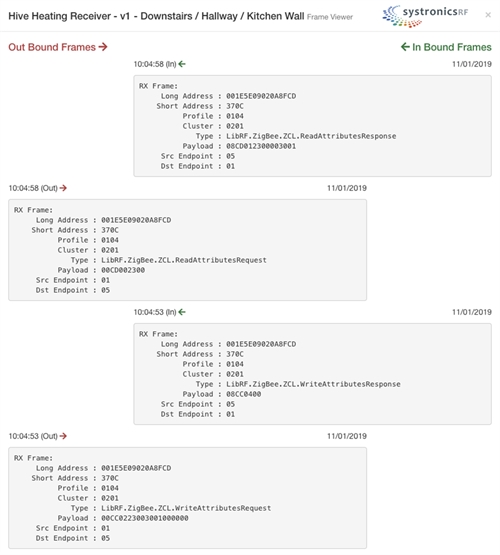Exchanging Frames
Devices on both ZigBee and a Z-Wave mesh networks communicate by exchanging frames. Each frame contains header data, which identify the source and the target device, and a payload, which contains the data being sent to the receiving device.

This screenshot shows the exchange of frames between a heating receiver and the control system on a ZigBee network.
The frames are shown in reverse chronological order, with the oldest frame at the bottom.
In the first frame, which is shown at the bottom, the control system sends a frame to the heating receiver instructing it to boost the temperature for a period of time.
The heating receiver responds with an acknowledgement back to the control system, which is the second frame from the bottom. Unless it had been switched off, the heating receiver was likely to have been following an programmed heating schedule when this instruction was received.
The control system is designed to operate on a closed-loop basis wherever possible. In this case, the control system sends a request to the heating receiver for its current settings, which is the second frame from the top. This is to ensure that the receiver has changed its settings in response to the previous instruction.
The heating receiver responds by reporting its current settings back to the control system, which is the top frame.
The data shown in the screenshot, which was captured in real time, shows a summary of the data contained in each frame. This includes the short address and the long address of the heating receiver, the profile ID, the cluster ID, and heating receiver endpoint, which is 5. The payloads being sent in each frame are also shown.
As well as all of the frame exchanges, and their content, being viewable in real time, they are also logged automatically for subsequent analysis.
Visibility of the frame exchanges is essential for determining the precise behavior of each device for profiling purposes.